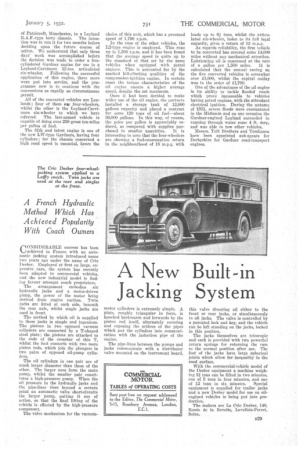Oil-engined Vehicles for Haulage Service
Page 42

Page 43

If you've noticed an error in this article please click here to report it so we can fix it.
ON January lst, 1921, two brothers, Messrs. Toft, and their brotherin-law, Mr. Tomlinson, started a haulage concern at Darley Dale, Derbyshire. The headquarters are within 16 miles of Sheffield and are situated on the main road from Matlock to Buxton, so that local conditions favour obtaining haulage business.
The first vehicle was a Mandalay 5-ton lorry and little by little the fleet was increased, until to-day it numbers some 40 heavy motors. Amongst the many classes of load carried considerable business is done in road material and wheat.
Traffic is by no means all of a local
nature and a good deal of long-distance work is undertaken. This is borne out by the fact that the annual mileage for the fleet now approaches the 1,000,000 mark, and the concern's petrol contract calls for from 90,000 gallons to 100,000 gallons annually. Road Fund licences cost approximately £2,000 a year, and the pay-roll contains some 40 names. Bodies for the vehicles are built by the operators.
During the summer of 1931 the three partners came to the conclusion that rapidly increasing competition demanded an overhaul of vehicle-operating costs, and it was decided that the expenditure on fuel might prove the most profitable item to be tackled.
Major W. H. Goddard, whose activities in connection with the oil engine are widely known, persuaded Messrs. Toft and Tomlinson to put into service a Gardner 50 h.p. engine manufactured by Norris, Henty and Gardners, Ltd., of Patricroft, Manchester, in a Leyland
R.A.F.-type lorry chassis. The intention was to lain it for two months before deciding upon the future course of action. We understand that only three days' work was accomplished before the decision was made to order a fivecylindered Gardner engine for use in a Leyland-Carrimore 12-ton articulated
six-wheeler. Following the successful application of this engine, three more were put into service, and the programme now is to continue with the conversions as rapidly as circumstances permit.
All of the converted vehicles are Leylands ; four of them are four-wheelers, whilst the other is the Leyland-Carrimore six-wheeler to which we have referred. The last-named vehicle is capable of doing over 250 gross ton-miles per gallon of fuel.
The fifth and latest engine is one of the new LW-type Gardners, having four cylinders; for the chassis concerned a high road speed is essential, hence the choice of this unit, which has a governed speed of 1,790 r.p.m.
In the case of the other vehicles, the L2-type engine is employed. This runs up to 1,300 r.p.m. and it has been found that the average speed is quite up to the standard of that set by the same vehicles when equipped with Petrol engines. This is accounted for by the marked hill-climbing qualities of the compression-ignition engine. In certain cases the torque characteristics of the oil engine ensure a higher average speed, despite the set maximum.
Once it had been decided to make wider use of the oil engine, the partners installed a storage tank of 13,000 gallons capacity and placed a contract for some 120 tons of oil fuel—about 80,000 gallons. In this way, of course, the price per gallon is appreciably reduced, as compared with supplies pur chased in smaller quantities. It is Interesting to note that the four-wheelers are showing a fuel-consumption return in the neighbourhood of 18 m.p.g. with
loads up to 64, tons, whilst the articulated six-wheeler, laden to its full legal capacity, gives a return of 13 m.p.g.
As regards reliability, the first vehicle to be converted has covered some 14,000 miles without any mechanical attention. Lubricating oil is consumed at the rate of a gallon per 1,500 miles. It is calculated that the annual saving on the five converted vehicles is somewhat over £1,000, whilst the capital outlay was in the order of 4700.
One of the advantages of the oil engine is its ability to tackle flooded roads which prove impassable to vehicles having petrol engines, with the attendant electrical ignition. During the autumn of 1931, severe floods were encountered in the Midlands and on one occasion the Gardner-engined Leyland succeeded in running through water some 4 ft. deep, and was able to tow other vehicles.
Messrs. Toft Brothers and Tomlinson have been appointed sub-agents for Derbyshire for Gardner road-transport engines.




























































































